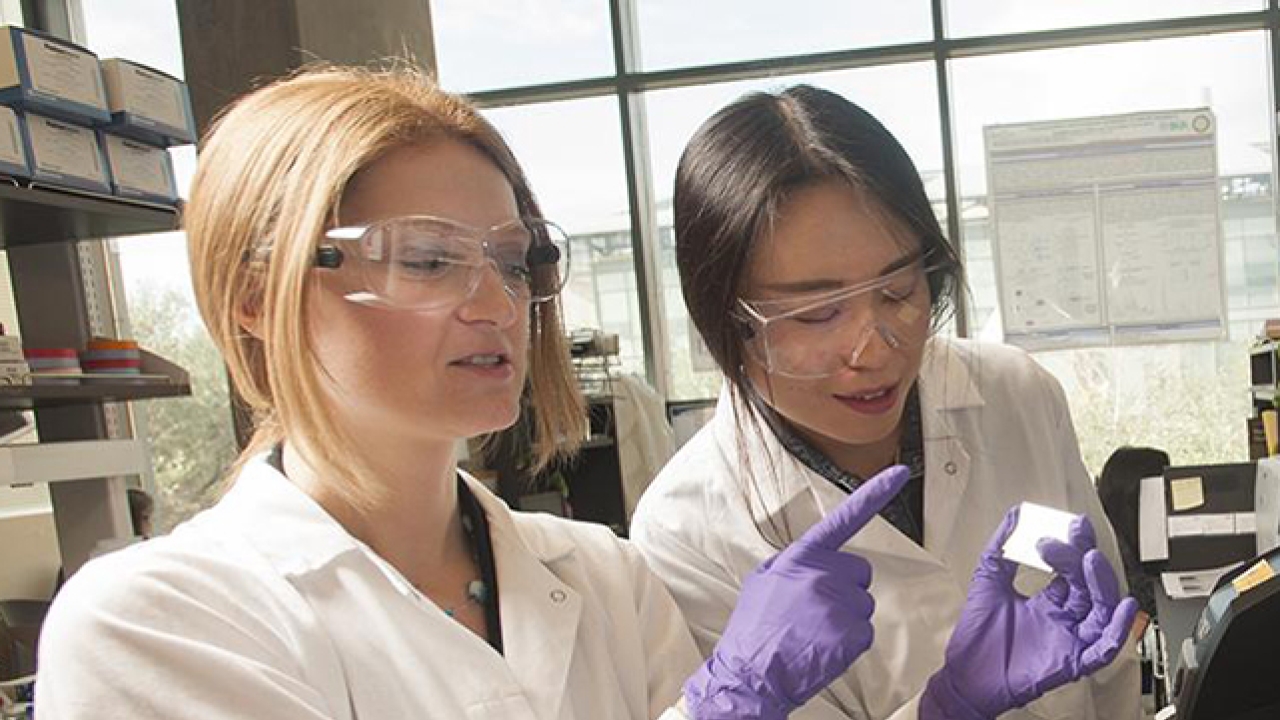
Gut microbes and milk compounds tackle childhood malnutrition
This article originally appeared on the UC Davis news website.
The “forests” of microbes that naturally grow in babies’ guts are increasingly recognized as key players in childhood health and nutrition.
In two newly published studies, research teams led by Washington University, St. Louis, in collaboration with UC Davis scientists, demonstrate that gut microbes can contribute to or prevent impaired growth and that specific sugar compounds found in milk can help promote growth by nourishing gut microbes.
One study suggests that there may be opportunity for the dairy industry to play an important role in helping to develop novel foods and therapies.
Results from the two studies offer hope for reducing malnutrition, which each year kills 3.1 million children globally, accounts for 45 percent of deaths among children under age 5, and robs millions of the surviving children of their physical and intellectual potential.
Now appearing in Science and Cell
In one of the new studies, scientists found evidence that impaired “maturation” of babies’ gut microbe communities can directly contribute to poor growth. Their findings will be reported Feb. 19 in the journal Science.
In the other study, researchers demonstrated that certain complex sugar compounds found in human milk, and to a lesser extent in cow’s milk, nourish health-promoting gut microbes and may be important ingredients for future therapies. The findings of that study will appear Feb. 19 in the journal Cell.
Both studies were led by acclaimed gut-microbiome researcher Jeffrey I. Gordon of the University of Washington School of Medicine in St. Louis. The studies involved germ-free mice and/or piglets as research models.
“This research provides a microbial view of human development and suggests potential new therapies for malnutrition that target gut microbes in order to promote healthy growth,” said Gordon, the Dr. Robert J. Glaser Distinguished University Professor and director of Washington University’s Center for Genome Sciences and Systems Biology.
“Current ‘ready-to-use’ therapeutic foods have reduced mortality from malnutrition, but these children continue to show lingering long-term effects, including stunted growth, impaired neurodevelopment and dysfunctional immune systems,” Gordon said.
Maturity of infant gut microbe communities
The study published in Science built upon earlier findings, which showed that undernourished children have immature, underdeveloped microbiota, or communities of microbes, in their guts.
To examine the relationship between underdeveloped microbiota and growth, the researchers transferred microbes from either healthy or undernourished 6- and 18-month-old children into “germ-free” mice, which had been specially raised to have no pre-existing gut microbes of their own. The mice were then fed diets that mirrored the diets of either the healthy or undernourished children.
The researchers found that mice receiving microbes from undernourished children developed impaired growth patterns, similar to those seen in the undernourished children, even though there was no significant difference in food consumption between the groups.
Furthermore, researchers found that when mice from both groups were housed together and had the opportunity to pick up microbes from each other, they soon developed similar collections of microbes in their guts. The researchers found that the microbes that originated in healthy children seemed to correct abnormal growth patterns in mice that had first received microbes from undernourished children.
The researchers also found that the collection of microbes derived from 6-month-old children had a greater impact on growth than did microbes from 18-month-old children.
“The findings clearly indicate that the proper development of the gut microbiota is important for normal growth,” said study co-author Kathryn Dewey, UC Davis distinguished professor of nutrition. Dewey coordinates an international research consortium focused on improving maternal and infant nutrition in Africa.
A solution to stunting found in cow’s milk?
In the study reported in the journal Cell, the researchers explored the connection between infant undernutrition and certain oligosaccharides, which are sugar compounds found in human breast milk and at much lower levels in cow’s milk.
They found that a specific type of these compounds called sialylated milk sugars are present at lower levels in the breast milk of mothers of undernourished, stunted children than in the breast milk of mothers of healthy children.
To explore that correlation, the researchers transferred gut microbes from a stunted and underweight infant into germ-free mice and also into germ-free piglets. Then they fed a diet that was supplemented with oligosaccharides derived from cow’s milk to the germ-free mice and germ-free piglets.
The results demonstrated that the sugar from cow’s milk improved growth and healthy metabolic processes in the mice and pigs that had received the malnourished infant’s gut microbes.
“In short, the study demonstrated that these specific complex milk sugars nourish the infant gut microbes introduced to the mouse and pig models, leading to improvements in a number of factors associated with growth and health,” said the study’s co-author David Mills, a professor of food science and technology at UC Davis.
Partnering with cheese maker
Oligosaccharides derived from cow’s milk for this study were provided by Hilmar Cheese Company. Hilmar’s cheese-processing facility in Merced County, California, has the technical capacity and expertise to separate the oligosaccharides from whey, a valuable byproduct of the cheese-making process.
“This is a wonderful example of the dairy industry serving as a hands-on partner with UC Davis researchers to make these high-end milk byproducts available for research,” said Mills.
“The particular excitement about this approach is the rapid nature by which this technology can be translated into novel foods and therapies, given the potentially massive oligosaccharide streams available for capture from the dairy industry worldwide,” he said.
Tedd Struckmeyer, a study co-author and Hilmar Cheese Company’s vice president of engineering, noted that the study results are intriguing.
“We are delighted to contribute our expertise in milk fractionation. Our innovation focus is on making more from milk and looking for unique milk properties that can be used to improve human nutrition,” Struckmeyer said. “We hope these studies stimulate further research funding to advance the understanding and availability of beneficial products.”
Collaborators
In addition to Washington University, UC Davis, and Hilmar Cheese Company, collaborating institutions included the University of Malawi, the University of Tampere in Finland, Duke University, Centre National de la Recherche Scientifique and Aix-Marseille Université in France, King Abdulaziz University in Saudi Arabia, the Russian Academy of Sciences in Moscow, and the Sanford Burnham Prebys Medical Discovery Institute in La Jolla, California.
UC Davis collaborators included Dewey and Joshua M. Jorgenson on the study published in Science. Mills, Dewey, Jorgenson, Daniela Barile, Carlito Lebrilla, Jasmine C.C. Davis and Sarah Totten (now at Stanford University) are the UC Davis co-authors on the study published in Cell.
Funding sources
Funding for both studies was provided by the Bill & Melinda Gates Foundation, the National Institutes of Health and the U.S. Agency for International Development. In addition, the Academy of Finland provided support for the study published in Science.
Learn more about Smart Farm >>
